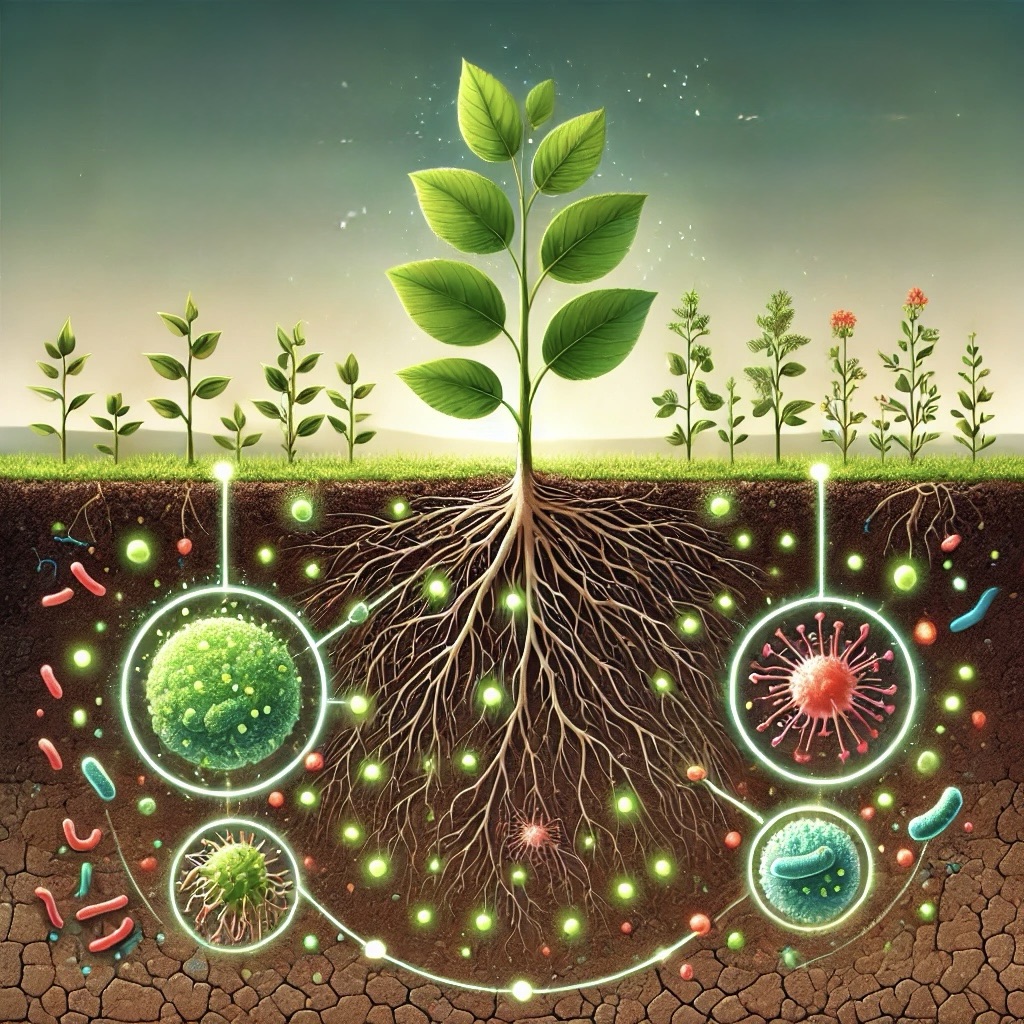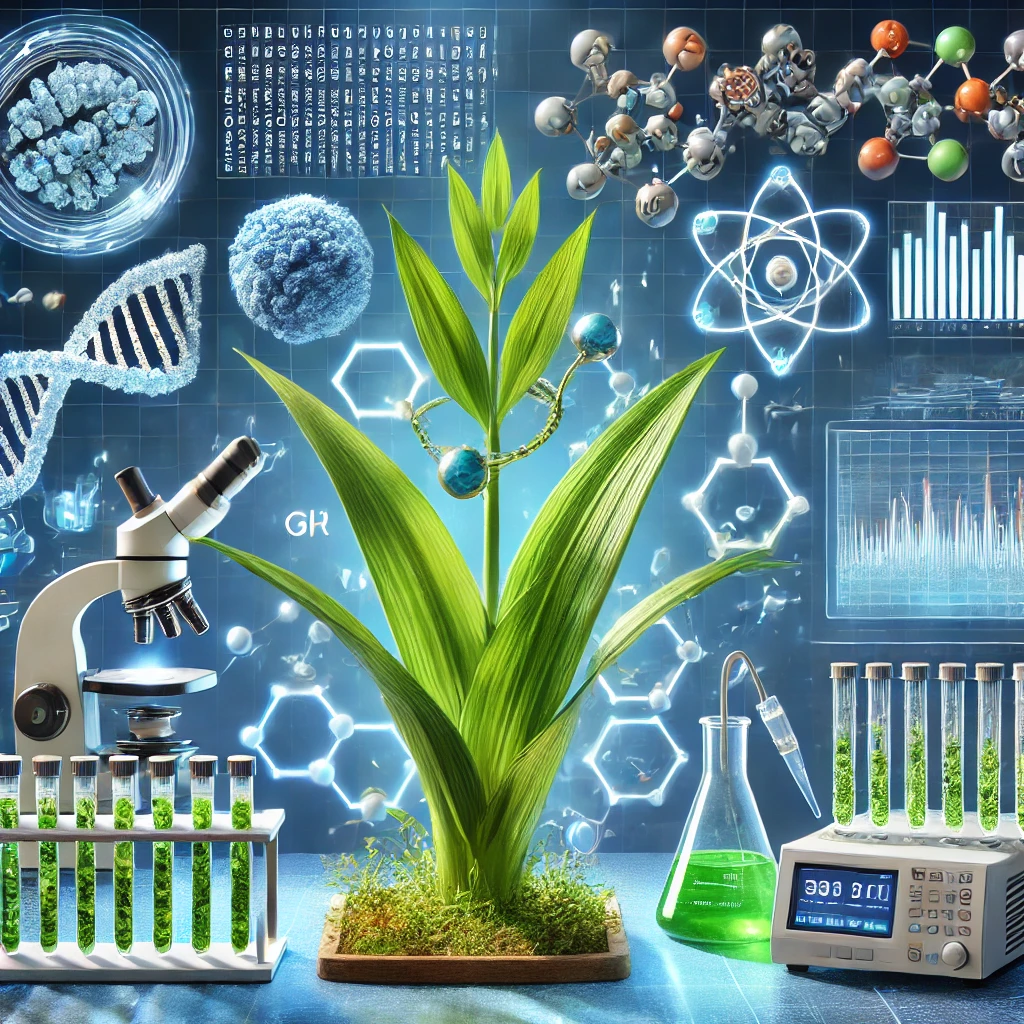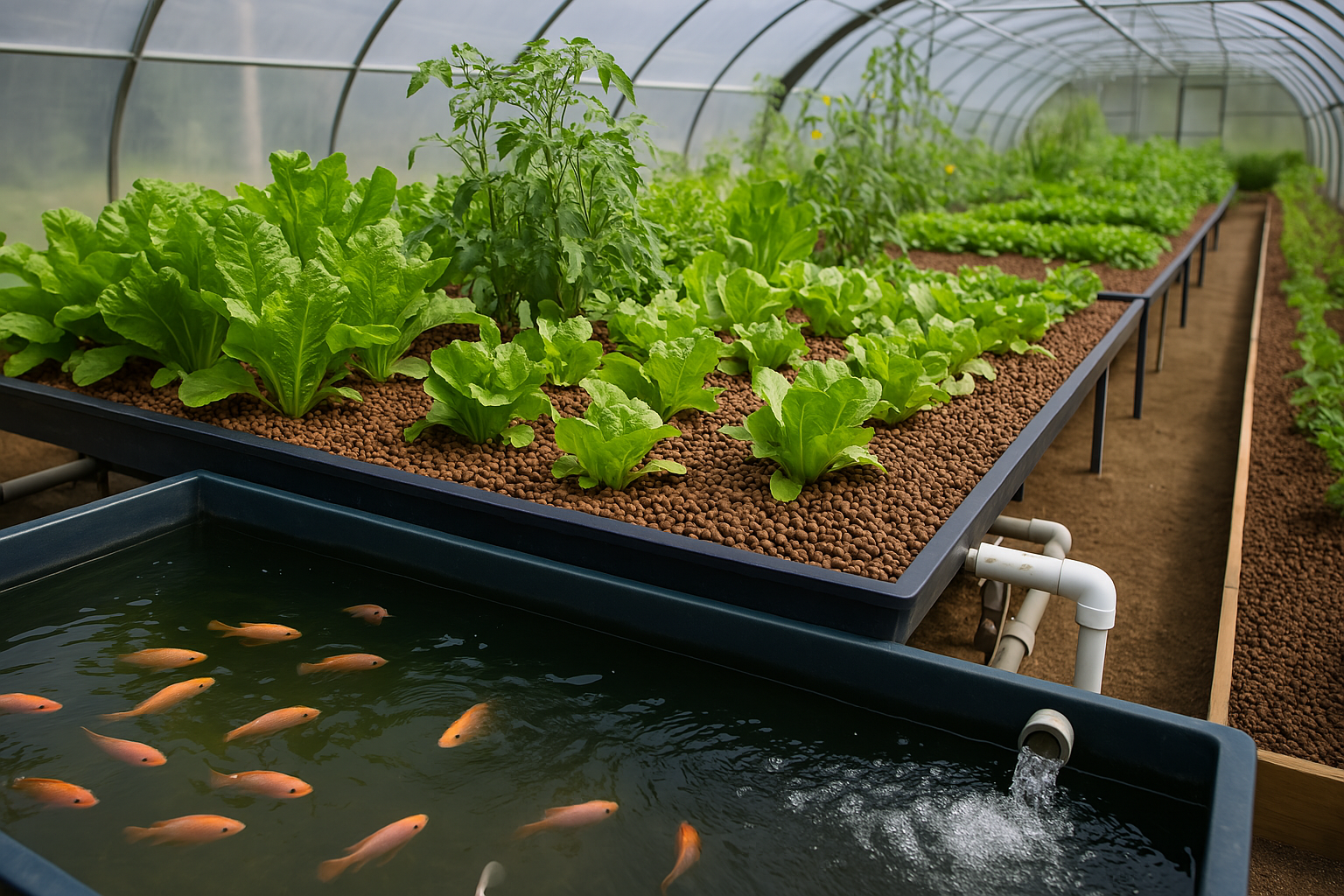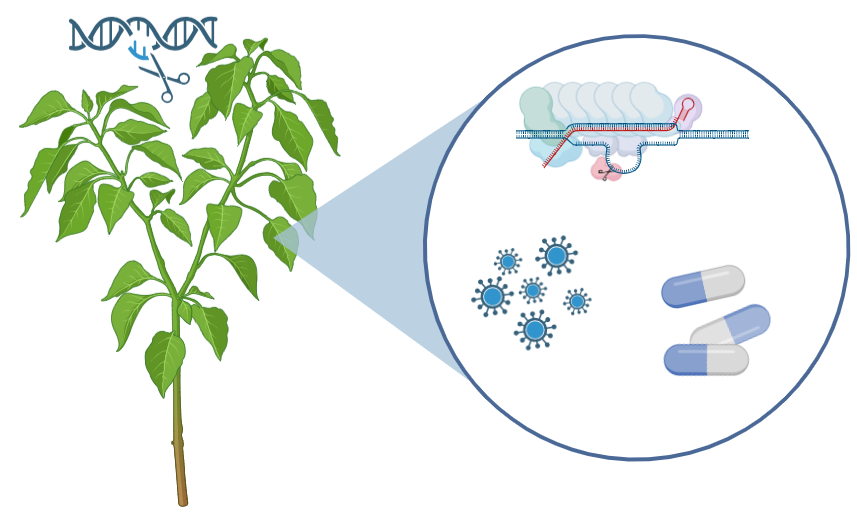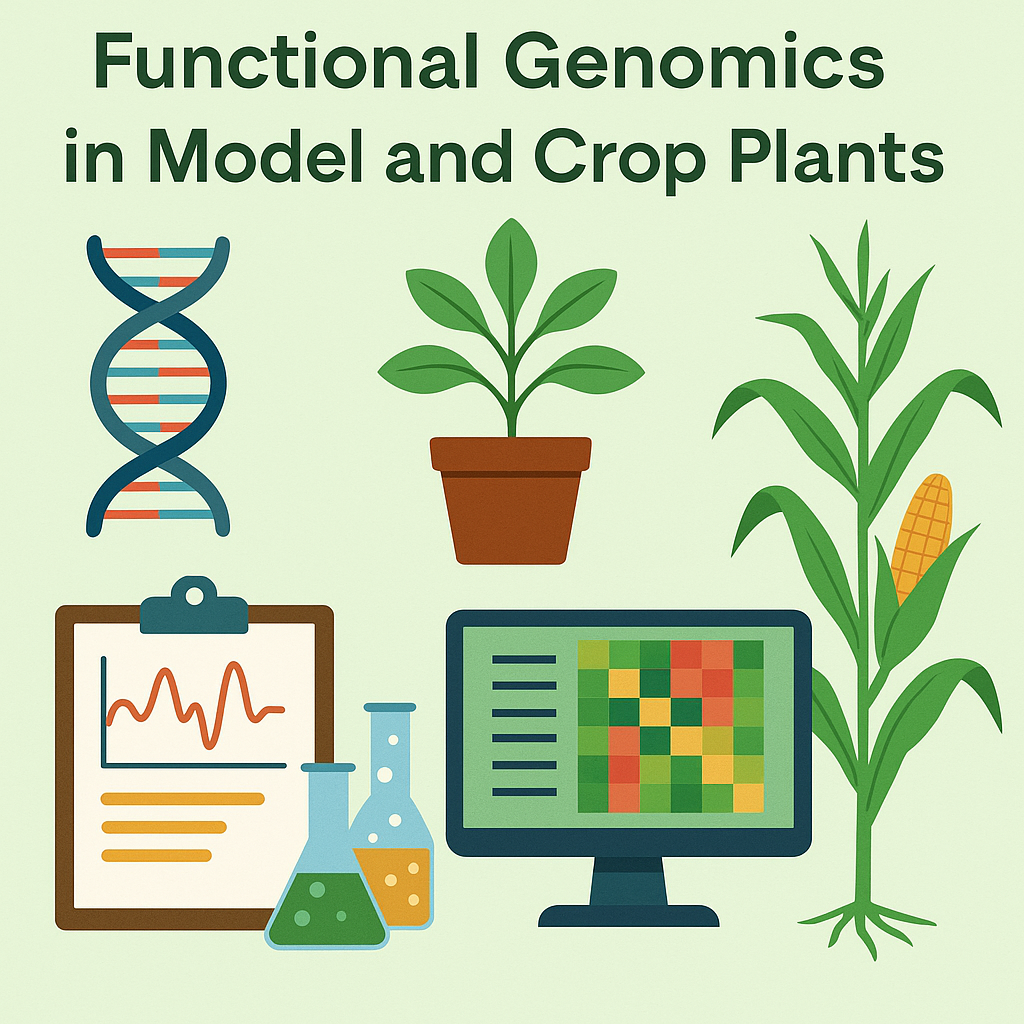Agricultural productivity is continuously challenged by various environmental stresses, including drought, salinity, extreme temperatures, and heavy metal toxicity. These stress factors significantly reduce crop yield and threaten global food security. Traditional approaches to mitigating environmental stress, such as chemical fertilizers and genetic modifications, have limitations in sustainability, cost, and potential ecological consequences. As a result, microbial bioinoculants have emerged as a promising, eco-friendly alternative for enhancing stress tolerance in crops.
Understanding Microbial Bioinoculants
Microbial bioinoculants, also known as plant growth-promoting microorganisms (PGPMs), consist of beneficial bacteria, fungi, and other microbes that interact symbiotically with plants. These microbes improve nutrient uptake, enhance root growth, and activate plant defense mechanisms against environmental stress. The most commonly used microbial bioinoculants include plant growth-promoting rhizobacteria (PGPR), arbuscular mycorrhizal fungi (AMF), and endophytic fungi and bacteria.
PGPR are free-living bacteria that colonize plant roots and enhance growth through nitrogen fixation, phosphate solubilization, and production of plant hormones. Some of the well-known PGPR include species from the genera Pseudomonas, Bacillus, and Azospirillum, which not only promote growth but also induce stress tolerance mechanisms in plants.
Arbuscular mycorrhizal fungi (AMF) establish symbiotic relationships with plant roots, forming a mycorrhizal network that extends into the soil, thereby increasing water and nutrient uptake. AMF species, such as Glomus and Rhizophagus, improve plant resistance to drought, salinity, and heavy metal stress by enhancing root absorption capacity and regulating stress-responsive genes.
Endophytic fungi and bacteria live within plant tissues without causing harm and provide multiple benefits, including resistance to abiotic stress and pathogen attacks. Some notable endophytic microbes, such as Trichoderma and Streptomyces species, enhance plant resilience by producing bioactive compounds, including antimicrobial and antioxidant substances that mitigate stress-induced damage.
The use of microbial bioinoculants is gaining significant attention in sustainable agriculture due to their ability to reduce dependency on chemical fertilizers and pesticides while improving soil health. The selection of appropriate microbial strains, their compatibility with host plants, and their persistence in the soil environment are crucial factors determining the success of bioinoculant applications in different agricultural systems.
Mechanisms of Stress Alleviation by Microbial Bioinoculants
Microbial bioinoculants employ several mechanisms to enhance stress tolerance in crops. One of the primary mechanisms is the production of phytohormones such as auxins, gibberellins, and cytokinins, which regulate plant growth under stress conditions. Certain bacteria, such as Azospirillum and Bacillus species, are known to produce indole-3-acetic acid (IAA), promoting root elongation and improving water and nutrient absorption during drought conditions.
Another crucial mechanism involves the induction of systemic resistance. Microbes trigger plant immune responses by activating pathways such as systemic acquired resistance (SAR) and induced systemic resistance (ISR). This primes the plant to defend itself against abiotic stressors such as heat and salinity. For instance, Pseudomonas and Trichoderma species stimulate ISR, enhancing tolerance to drought and heavy metal stress.
Additionally, microbial bioinoculants improve soil health by facilitating nutrient solubilization and uptake. Phosphate-solubilizing bacteria (e.g., Pseudomonas and Bacillus) and nitrogen-fixing bacteria (e.g., Rhizobium and Azotobacter) ensure adequate nutrient availability even under nutrient-deficient conditions. Mycorrhizal fungi form symbiotic relationships with plant roots, enhancing phosphorus and water uptake, which is particularly beneficial in drought-prone areas.
Application of Microbial Bioinoculants in Different Stress Conditions
Microbial bioinoculants have demonstrated remarkable effectiveness in mitigating various abiotic stresses. Under drought stress, inoculation with mycorrhizal fungi such as Glomus species improves water retention in plants and maintains photosynthetic efficiency. PGPR strains like Bacillus subtilis and Pseudomonas fluorescens enhance root architecture, allowing plants to access deeper soil moisture reserves.
Salinity stress poses a significant challenge to agricultural lands, leading to ion toxicity and osmotic stress in plants. Microbial bioinoculants help by producing osmolytes such as proline and glycine betaine, which protect plant cells from salt-induced dehydration. Halotolerant bacteria like Pseudomonas putida and Enterobacter sp. facilitate ion homeostasis by regulating sodium and potassium uptake, reducing the harmful effects of salinity.
Temperature extremes, including both heat and cold stress, also impact crop productivity. Certain microbial inoculants, such as cold-tolerant strains of Pseudomonas and Bacillus, improve plant resilience to frost by producing antifreeze proteins and exopolysaccharides that protect cellular structures. Conversely, heat-tolerant microbes enhance thermotolerance by upregulating stress-responsive genes and antioxidant enzymes, reducing oxidative damage caused by high temperatures.
Heavy metal stress, arising from industrial pollution and excessive fertilizer use, can be mitigated by microbial bioinoculants through metal chelation and sequestration. Certain bacteria, such as Pseudomonas aeruginosa and Bacillus megaterium, immobilize toxic metals, preventing their uptake by plants. Mycorrhizal fungi play a crucial role in phytoremediation by trapping heavy metals in the root zone, thus reducing their translocation to edible plant parts.
Future Prospects and Challenges
The potential of microbial bioinoculants in sustainable agriculture is immense, but several challenges must be addressed for widespread adoption. One of the major hurdles is the inconsistency in field performance due to varying environmental conditions. Factors such as soil type, microbial competition, and climatic variability influence the effectiveness of bioinoculants. To overcome these challenges, research is focusing on developing tailored microbial consortia that work synergistically to enhance stress tolerance under specific agro-climatic conditions.
Another challenge is the formulation and shelf-life stability of microbial bioinoculants. Traditional inoculants often have a short lifespan and require refrigeration, making large-scale distribution challenging. Advances in biotechnology, such as encapsulation techniques and carrier-based formulations, are improving the viability and effectiveness of bioinoculants in agricultural applications.
Regulatory approval and farmer awareness are also critical for the successful implementation of microbial bioinoculants. Policymakers need to establish clear guidelines for their commercialization, ensuring quality and efficacy. Educating farmers about the benefits of bioinoculants and providing incentives for their use can accelerate adoption and reduce dependency on chemical fertilizers.
Conclusion
Microbial bioinoculants represent a sustainable and eco-friendly solution for enhancing stress tolerance in crops. By improving nutrient uptake, stimulating plant defense mechanisms, and mitigating the effects of abiotic stresses, these beneficial microbes offer a promising alternative to traditional agricultural practices. Continued research and technological advancements in bioinoculant formulations and application strategies will be crucial for their widespread adoption in modern agriculture. As global challenges such as climate change and soil degradation continue to threaten food security, integrating microbial bioinoculants into farming systems can play a vital role in ensuring resilient and sustainable crop production.
References
- Glick, B. R. (2012). Plant Growth-Promoting Bacteria: Mechanisms and Applications. Scientifica, 2012, 1-15.
- Smith, S. E., & Read, D. J. (2008). Mycorrhizal Symbiosis. Academic Press.
- Vessey, J. K. (2003). Plant growth-promoting rhizobacteria as biofertilizers. Plant and Soil, 255(2), 571-586.
- Bashan, Y., & de-Bashan, L. E. (2010). How the plant growth-promoting bacterium Azospirillum promotes plant growth—a critical assessment. Advances in Agronomy, 108, 77-136.
- Khan, N., et al. (2020). PGPR-mediated plant growth and alleviation of salt stress: Current perspectives and future challenges. Frontiers in Sustainable Food Systems, 4, 618230.






